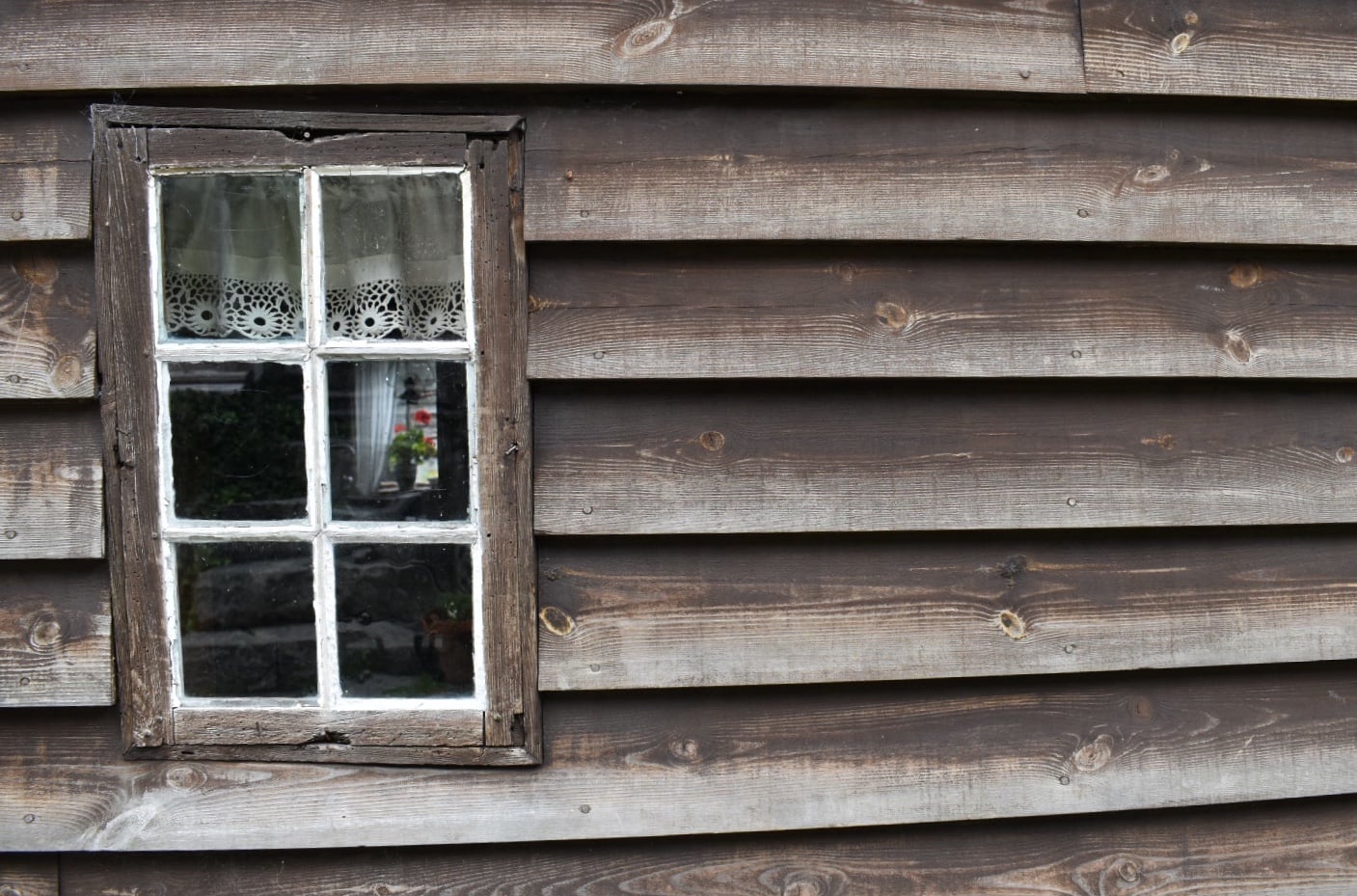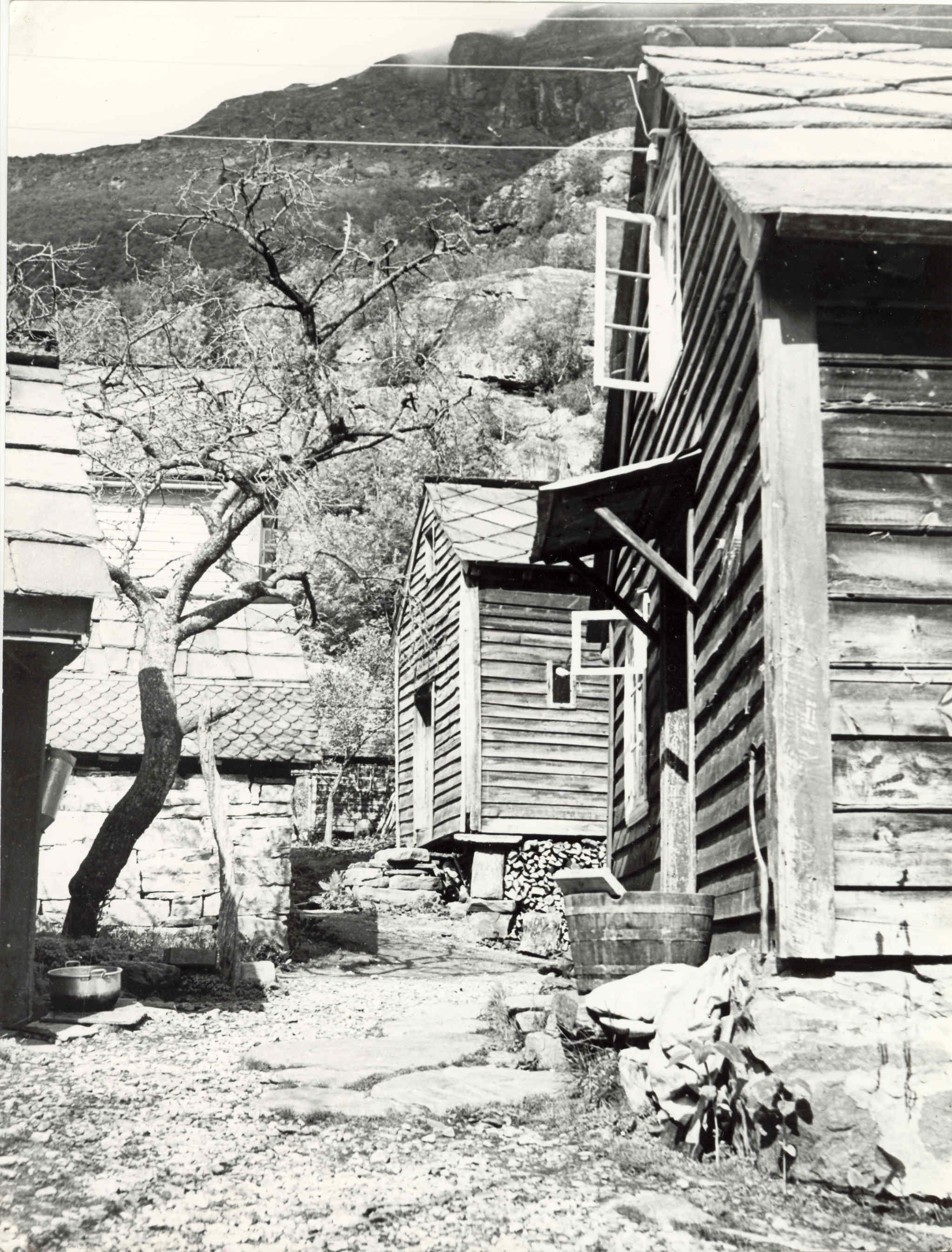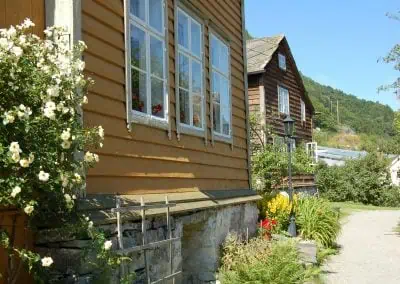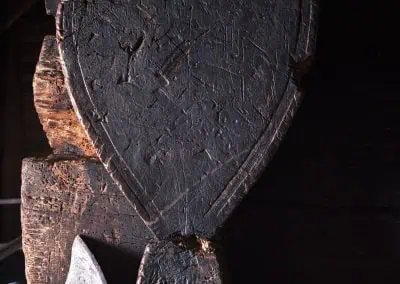Some history



Agatunet – stories to tell
Agatunet is one of the few intact farm clusters that used to be prevalent in Norway. The farm cluster has outstanding examples of Western Norwegian building styles from the Middle Ages and up to the present. It has Norway’s oldest court room, a knight’s residence and traces of everyday life through the ages.
There are lots of good reasons to go on a guided tour!
The large, old farm Aga developed over the years into an extensive farm cluster, beautifully situated between the fjord and mountains in the inner reaches of Hardanger. In connection with the land consolidation of 1938, 45 of the buildings were given protected status. Thirty of them are now managed by the Stiftelsen Agatunet foundation. The farm cluster has been open to the public during summer for the last 20 years, with guided tours, a café, exhibitions, concerts, food and drink, and events, and is now run by Hardanger and Voss Museum.
People have probably lived here for more than 3,700 years. There are relics of the past both within and outside the farm cluster, such as burial mounds, sacrificial pits and rock carvings.
The oldest building at Agatunet is Lagmannsstova, which was built in around 1220 by the family of knight, member of the State Council and Gulating Court Sigurd Brynjulvsson. Lagmannsstova was built as an administration building based on the European model, and it was used as an entertainment venue and a court room. Today, Lagmannsstova is the only building of its kind in Norway, and one of the best preserved secular medieval buildings in the country.
Sigurd Brynjulvsson drowned in 1303, and the farm was then divided between his daughters. The farm has been divided a number of times since then. At one point, it comprised as many as nine farms, 16 cotter’s farms and had a population of around 200 in and outside the farm cluster.
The farm has been important to fruit growing, trading across the Hardangervidda mountain plateau and in the trade by ‘jekt boats’ to Bergen and Northern Norway. It has had a chapel, a school, a grocery shop, a post office and a telegraph office.
The stories are lined up closer than the buildings!



